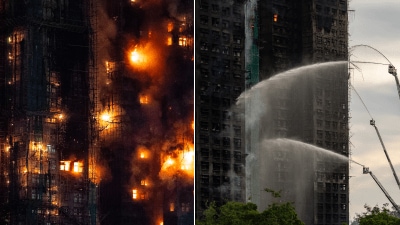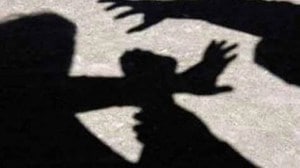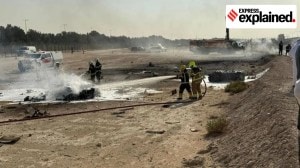From the valley of hope
News of conflict and violence in the Kashmir valley is so frequent, people living outside its epicentre have begun to treat it with indif...

News of conflict and violence in the Kashmir valley is so frequent, people living outside its epicentre have begun to treat it with indifference. Hence their only contribution to the crisis in Kashmir is hate Pakistan harder and scream the vocal chords sore every time Sachin Tendulkar decides to annihilate the Pakistani cricket team. Otherwise Kashmir is out there’ and it’s up to the government and the army to sort it out.
Kashmir may be out there, but the thousands, predominantly the Kashmiri Pandits, who have been displaced from their hometowns due to the militancy and are scattered all over India and the world. They are here in Pune too.
This Kashmiri Pandit community, that gave us Jawaharlal Nehru, is today living like refugees in their own country – neglected and with no home to go back to.
In order to organise attention to the Kashmiri Pandits’ plight before the nation and the world, the Panun Kashmir movement was started in Jammu, under the guidance of Dr Agnishekhar and Dr Ajay Chrangoo.
Dr Shuban Rawal, a scientist at the National Chemical Laboratories Pune, coordinated for Panun Kashmir in Pune, from 1990 to 1996. Rawal is also the joint secretary of the Kashmiri Hindu Sabha, Pune which is a trust comprising the Kashmiri Pandit population of Pune.
Says Rawal, “Panun Kashmir was formed with the idea of a separate homeland for Kashmiri Pandits in the Kashmir valley, within India itself. Panun means our very own.’ A marg-darshan was adopted at the World Panun Kashmir conference held at Delhi to work towards this idea.”
Pune also has many Kashmiri Pandit students who have come to study in the safety of Pune. Under the leadership of Romeet Kaul Watt, a student of College of Engineering Pune (COEP), many of these students have made Panun Kashmir in Pune very active in the last few years. Watt is also the president of the national displaced students front.
According to Watt, the motive of Panun Kashmir here is to give the people of Pune the real picture of what is happening in Kashmir. He laments on how the media and others were playing it down. “Look at the tour operators in Pune. They have been claiming that all is well in the Valley, as this suits their interests. When actually, life still remains unsafe for Kashmiri Pandits in the Valley. Our motive is to educate people here about the real situation in Kashmir,” says Watt.
Explaining the demands of Panun Kashmir, Watt says, “We are demanding a union territory within Kashmir to be created by clubbing the regions to the North and East of river Jhelum. We also want the government to recognise us as internally displaced people (IDP).” This is a UN convention according to which, governments provide special assistance to people displaced within their own country.
This community which has been living in arid neglect for so long, however, has plenty of reason to be happy with the government of Maharashtra. Recognising the predicament of this lot, the Maharashtra government has reserved seats for them in technical colleges all over the state. Panun Kashmir students wing president Puran Tickoo says, “The ABVP and the Bharati Vidyarti Sena have been helping us reach out to the local people, in our effort to increase awareness about the Kashmir problem.” Tickoo is a student of electrical engineering at COEP, Pune.
Last year, in September, Watt and his team published a magazine for Panun Kashmir titled, Kashmir: Living on the edge 1947 to AK-47. It was edited by Sanjay Labroo. It gives detailed accounts of the chaos prevailing in Kashmir and what Panun Kashmir is doing about it.
B L Adalti, general secretary of the Kashmiri Hindu Sabha of Pune, says, “Since 1990, Kashmiri Pandits have been roaming on the roads and in refugee camps, but no one has cared. Since then, many prime ministers have come and gone. But none have bothered to help this community resettle back in Kashmir”.
Left to fend for itself, this community has hence been trying to help itself and make do with its limited resources. Adalti explains that when displaced students came to Pune, the Kashmiri families here helped them find admissions to various courses, provided them with temporary accommodation and whatever other help possible. He adds, “Even when students from other communities who were forced to flee Kashmir sought our help, we provided all possible assistance”.
Though theirs is a small community, it is culturally a rich one. However, small and dispersed as they are, there is justifiable worry growing within the community that it may soon go extinct. It is in the interest of every Indian who takes pride in the rich diversity of our civilisation, to do something to salvage this jewel in our crown.
- 01
- 02
- 03
- 04
- 05































